TechRadar Verdict
The Samsung Galaxy Book 2 gets a lot of things right, namely its fantastic new design that brings it in line with industry norms, some impressive battery life and included accessories. However, this is yet another Windows tablet that’s largely held back by its Qualcomm processor – not to mention supporting hardware.
Pros
- +
Essential accessories included
- +
New, sensible design
- +
Gorgeous display
- +
Lengthy battery life
Cons
- -
Poor multitasking
- -
Poor pure performance
- -
Tiny touchpad
Why you can trust TechRadar
Since its first product in the category, Samsung has tried to differentiate its Windows tablets from the vast majority to varying success. The firm’s latest attempt appears to swim more with the tide than against it, but maintains some of that individual spirit that only ends up hurting it in the end.
This is the Samsung Galaxy Book 2, a 12-inch tablet that gets on trend in its industrial design but decidedly off trend on the inside. Getting in line from a design perspective may have been the best decision Samsung has ever made for a computing product, but adopting a Qualcomm Snapdragon 850 processor may have been its worst mistake.
Even with built-in LTE connectivity, we’re left wondering whether the move to Qualcomm Snapdragon was … premature. But, hey, both the stylus and keyboard cover accessories are in the box, which can’t be said of most Windows tablets.

Here is the Samsung Galaxy Book 2 configuration sent to TechRadar for review:
CPU: 2.9GHz Qualcomm Snapdragon 850 SoC (octa-core; four 1.7GHz cores, four 2.9GHz cores)
Graphics: Qualcomm Adreno 630
RAM: 4GB RAM
Screen: 12-inch FHD+ (2,160 x 1,440) Super AMOLED touchscreen
Storage: 128GB SSD
Ports: 2 x USB-C; 1 x microSD slot; 3.5mm audio jack
Connectivity: 802.11ac Wi-Fi (2.4GHz + 5GHz)
Camera: 5 megapixel (MP) webcam; 8MP rear camera
Weight: 1.75 pounds (793g)
Size: 11.32 x 7.89 x 0.30 inches (287.5 x 200.4 x 7.63cm; W x D x H)
Price and availability
To get a Samsung Galaxy Book 2 replete with an S Pen stylus and keyboard, it will cost you $999 (about £757, AU$1,399) in the US when it launches on November 2nd on AT&T, Microsoft and Samsung’s online stores. The tablet is also going straight to AT&T, Sprint and Verizon retail stores later this month.
This is the only configuration for Galaxy Book 2 at the moment, which nets you a Qualcomm Snapdragon 850 processor backed up by 4GB of memory and 128GB of solid-state storage. This all sits behind a 12-inch Super AMOLED display with a 2,160 x 1,440-pixel resolution.
As for connectivity and imaging, the tablet offers up two USB-C 3.1 ports (for both charging and data transfer), a microSD slot, a headphone jack, one 5-megapixel (MP) webcam up front and an 8MP camera around the back.
Comparatively speaking, Apple’s 12.9-inch iPad Pro and Microsoft’s 12.3-inch Surface Pro 6 call for $799 (£769, AU$1,199) and $899 (AU$1,349, about £690), respectively. Neither of these options include a stylus and keyboard cover, and therefore are already at a disadvantage from a price perspective.
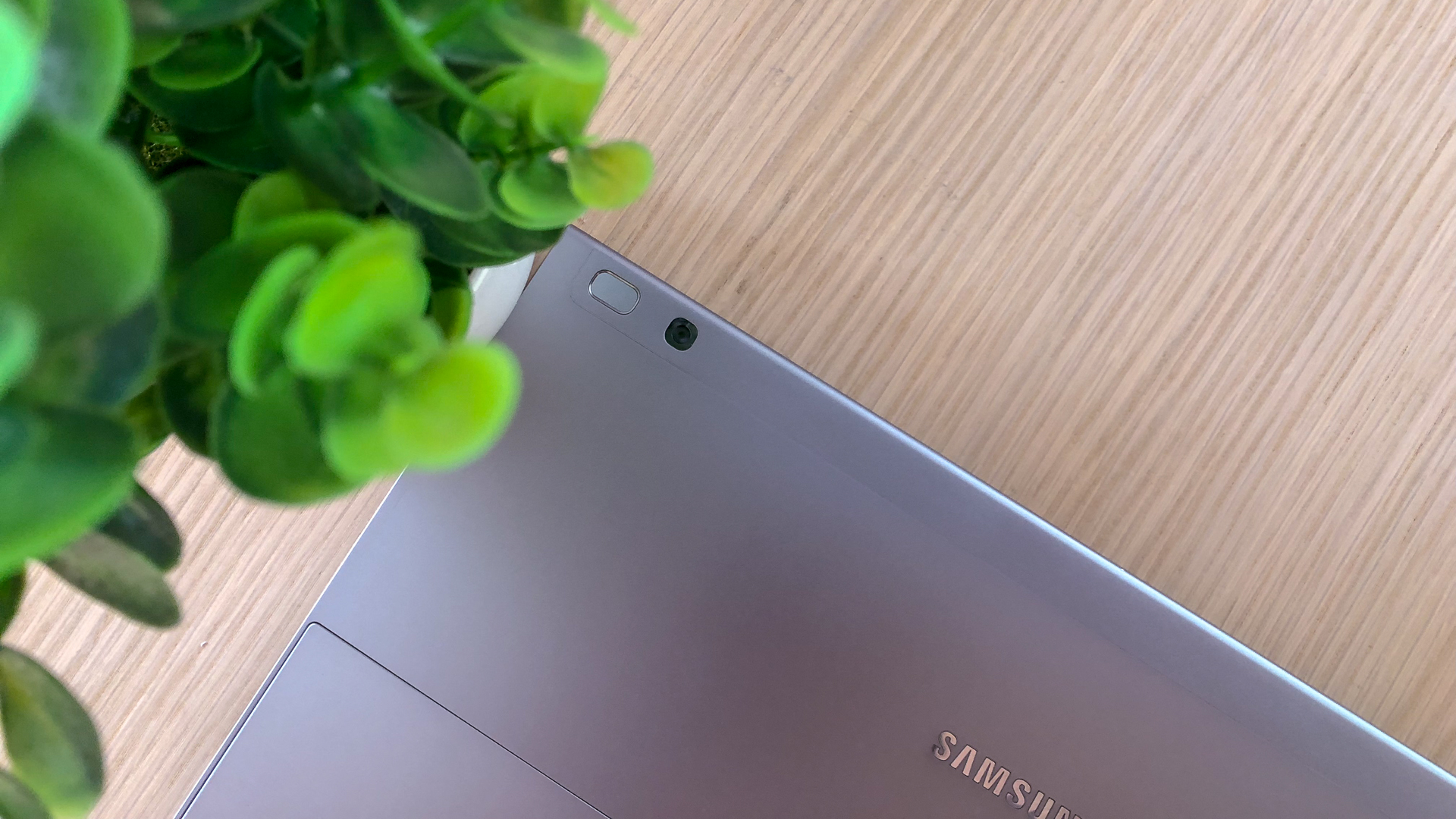

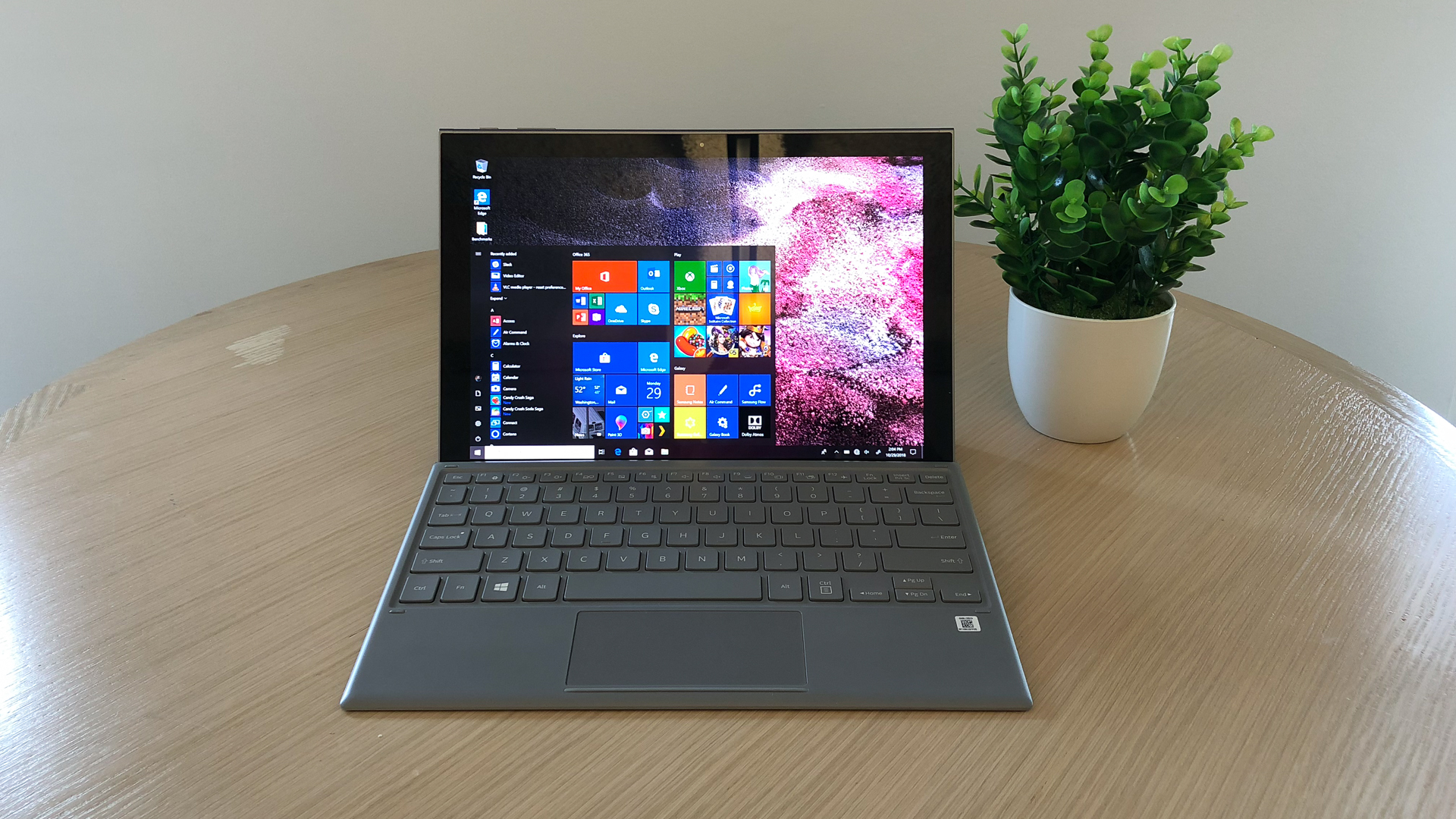

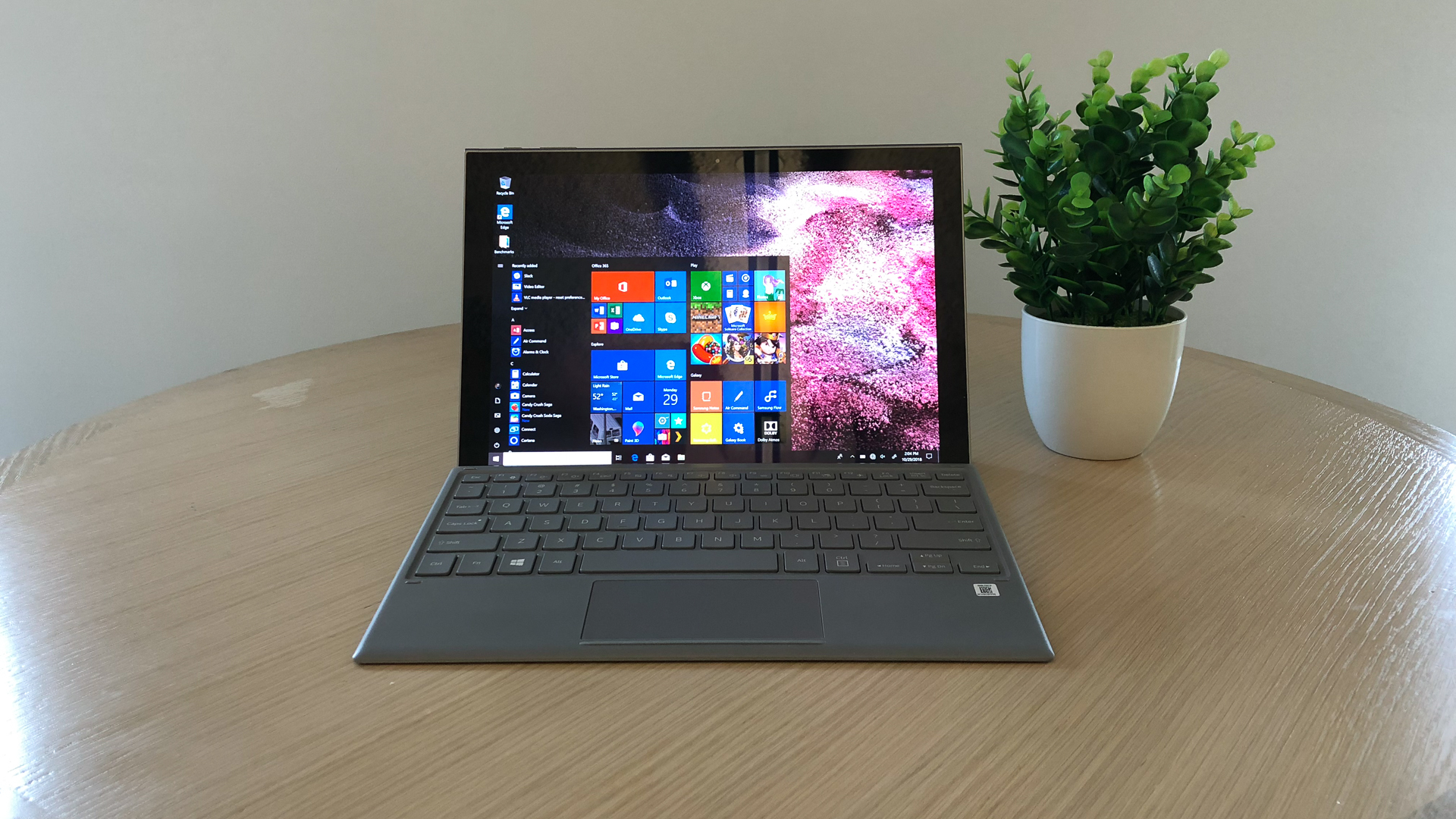
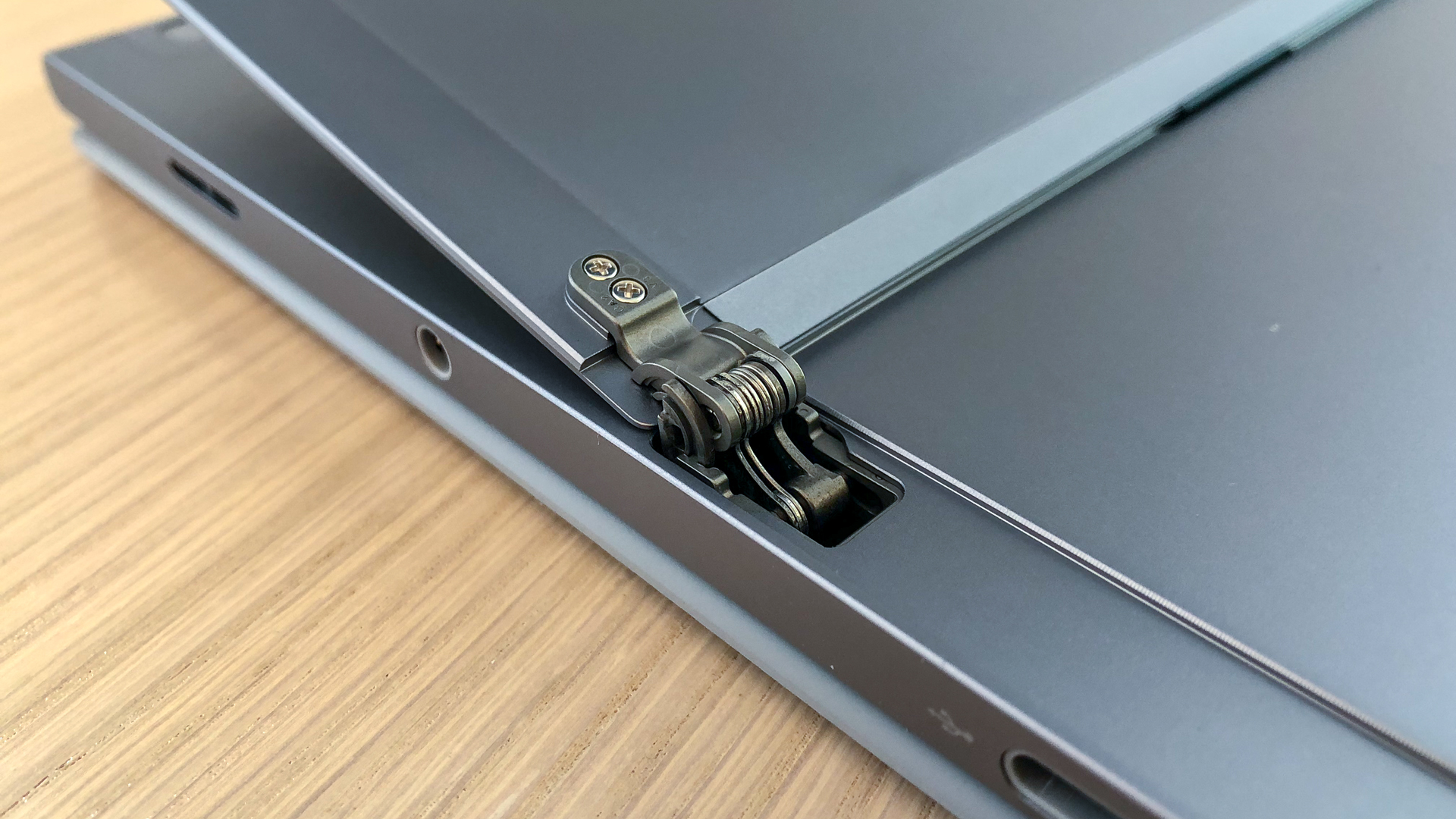
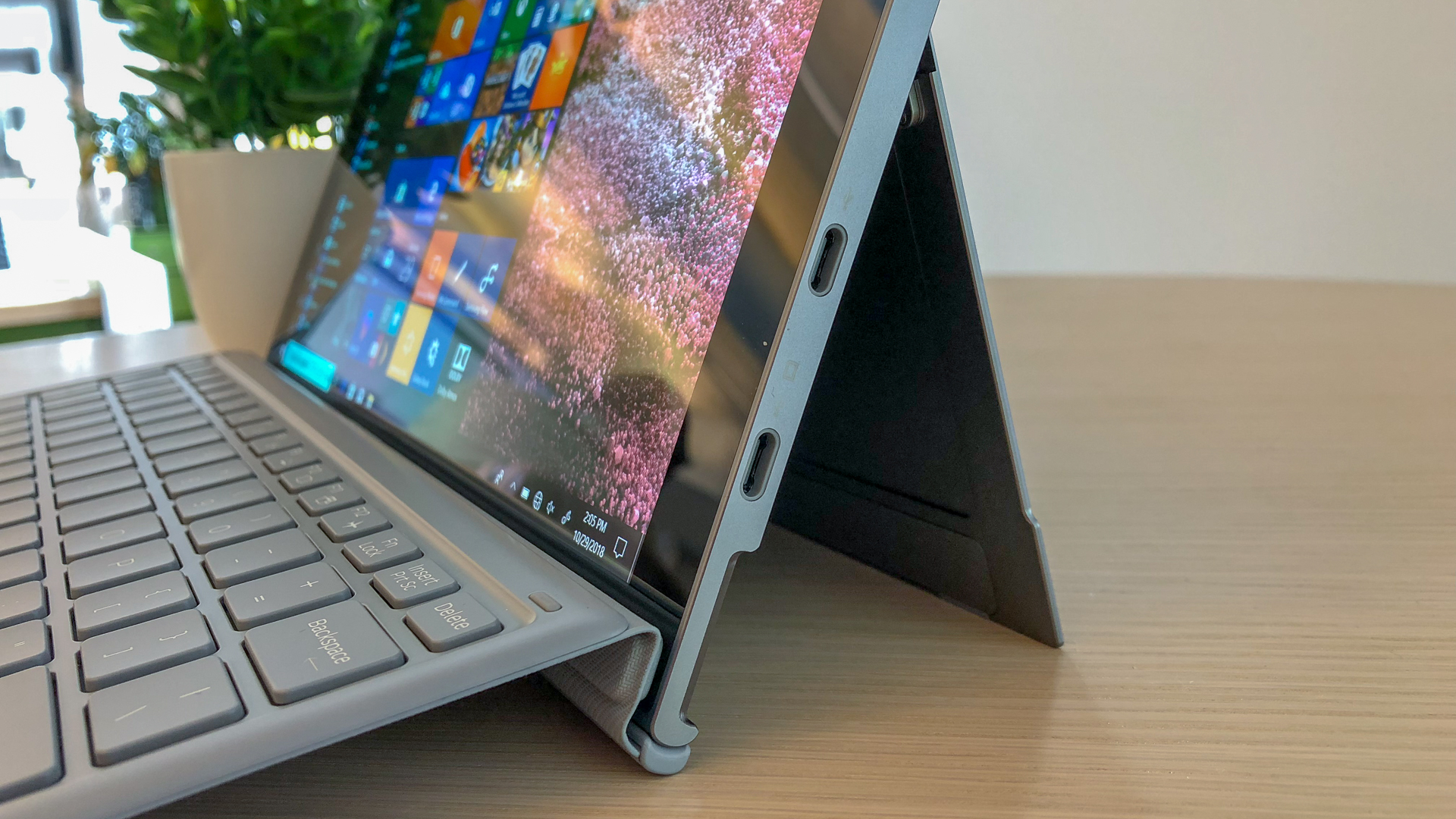

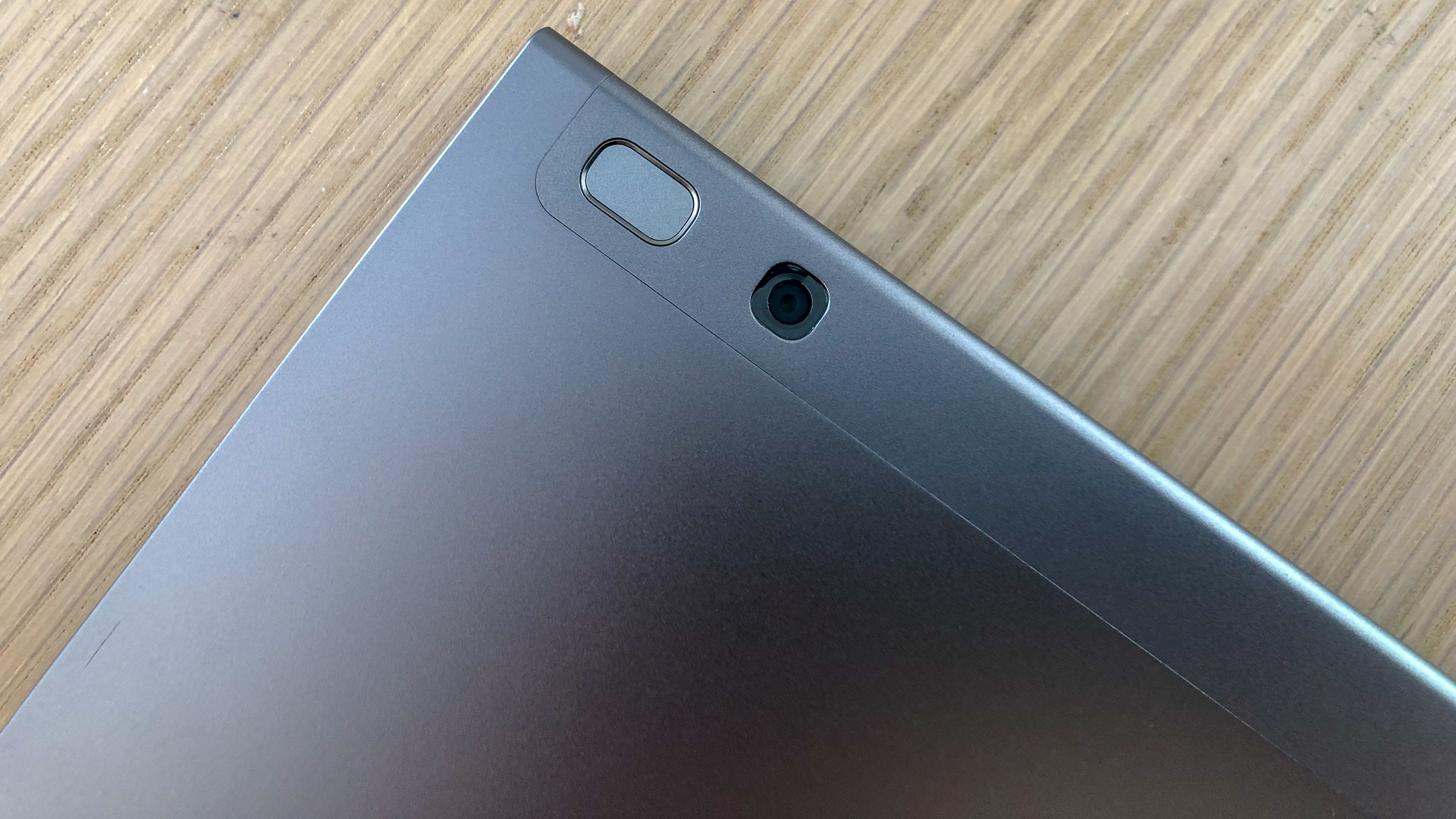


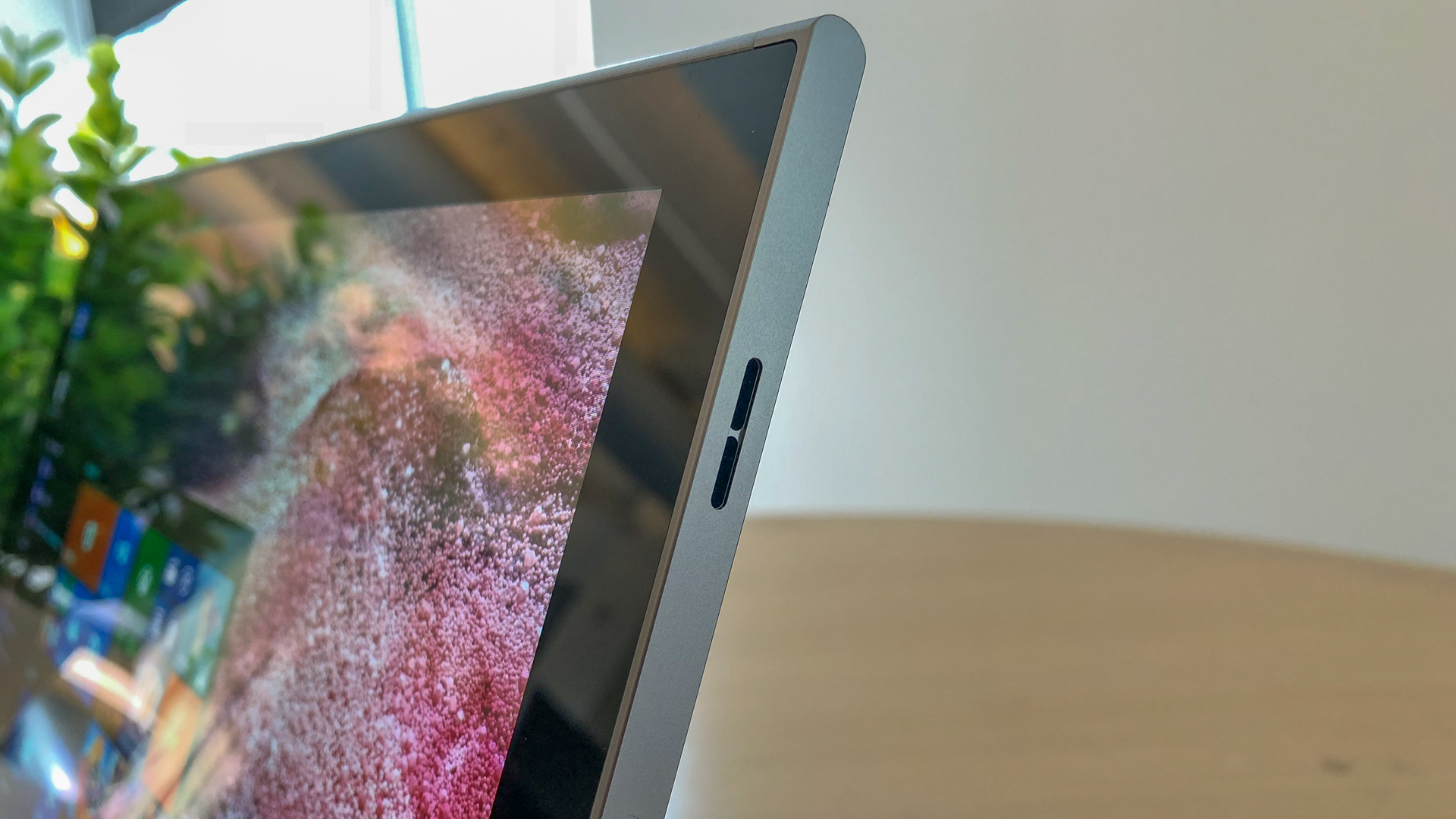
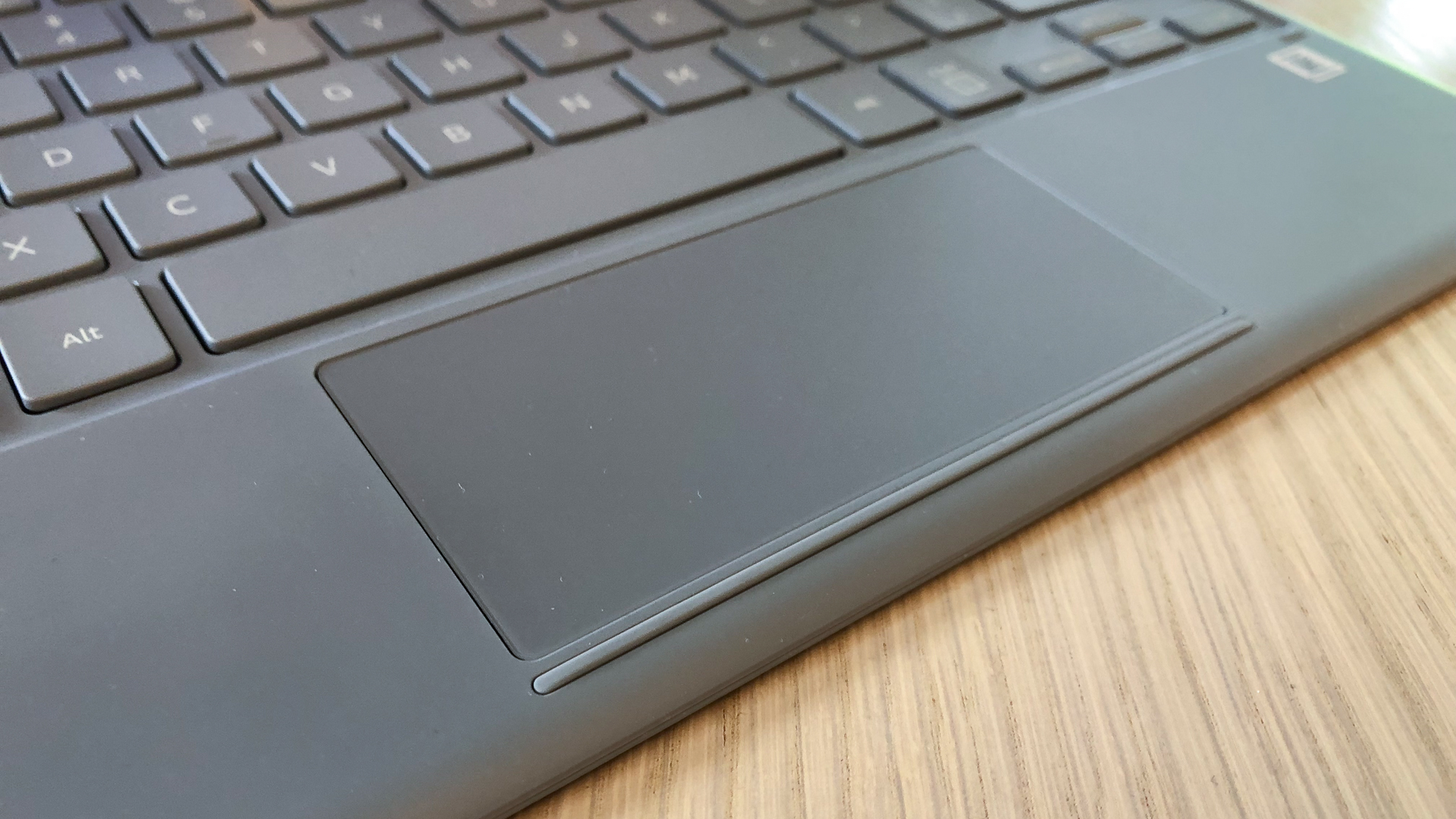

Design and display
For years, Samsung tried to differentiate itself when it came to 2-in-1 tablet design, with mixed results. Now, the company appears to have responded to feedback (including in TechRadar reviews) by falling in line with a redesign that looks and feels like any other Windows slate – but this isn't a bad thing.
This new design doesn’t necessarily make the Galaxy Book 2 that much more portable than previous editions, measuring 0.30 inches (7.62mm) and weighing 1.85 pounds (839g). But, it certainly makes the device way more versatile.
Rather than a keyboard case that doubles as stand, the new Galaxy Book 2 features a dedicated metal kickstand. This design allows for the Galaxy Book 2 to subsist better as a tablet on its own as well as perform better from an ergonomics standpoint when it’s time to do some typing. The stand is plenty sturdy and flexible, achieving a nearly 180-degree angle when fully bent backward.
Of course, the tablet has also gained a magnetic keyboard cover that clips onto bottom bezel for two different typing angles. Naturally, the typing and tracking vastly improved over the first Galaxy Book, and it largely comes down to the typing angle. That said, the travel is plenty deep and each key resets with plenty of force, and the keys are well spaced.
Tracking on the included touchpad is just fine, with multi-touch gestures well supported, including the classic method of tracking with an index finger and clicking with your thumb. However, we wish the trackpad was just a smidgen wider and deeper, as it’s a little tight – more so than on competing tablets.
Likewise to the keyboard, the stylus even connects to the tablet magnetically. Though, the magnets aren’t terribly strong and its round shape makes poor contact with the flat sides of the tablet. We wouldn’t be confident just throwing this tablet into a bag without first securing the stylus.

That said, the S Pen works brilliantly here, with strong pressure sensitivity and a real eraser button up top. The display also presents brilliant palm rejection – altogether making for a sublime inking experience.
The major ways in which the Galaxy Book 2 design differentiates itself from the category leader are with rounded edges as well a fingerprint sensor for secure login via Windows Hello. This is oddly placed around the rear of the tablet, but is still easy and intuitive enough to reach. As for speed and accuracy, it’s plenty accurate but isn’t quite as fast as competitors – like the Surface Pro 6’s lightning fast infrared camera solution.
Surely, some will say that Samsung’s move in this direction is unoriginal or uninspired, but perhaps this is simply the established mode for 2-in-1 tablets, much in the way that smartphones have all but homogenized in the past few years. With that, we’re happy to see Samsung begin to swim with the tide here rather than against it.
Now, when looking at the 12-inch Super AMOLED display, all we can say is that it’s absolutely a delight. The resolution is incredibly crisp, and competitively so when rivals are considered. Plus, the color reproduction appears to be as vibrant as ever on Samsung displays.
We can barely see the pixels within the display when up close and doodling using the S Pen, and its responsiveness to touch gestures as well as pen input is instantaneous.
- 1
- 2
Current page: Introduction, price, design and display
Next Page Performance, battery life, features and verdictJoe Osborne is the Senior Technology Editor at Insider Inc. His role is to leads the technology coverage team for the Business Insider Shopping team, facilitating expert reviews, comprehensive buying guides, snap deals news and more. Previously, Joe was TechRadar's US computing editor, leading reviews of everything from gaming PCs to internal components and accessories. In his spare time, Joe is a renowned Dungeons and Dragons dungeon master – and arguably the nicest man in tech.
